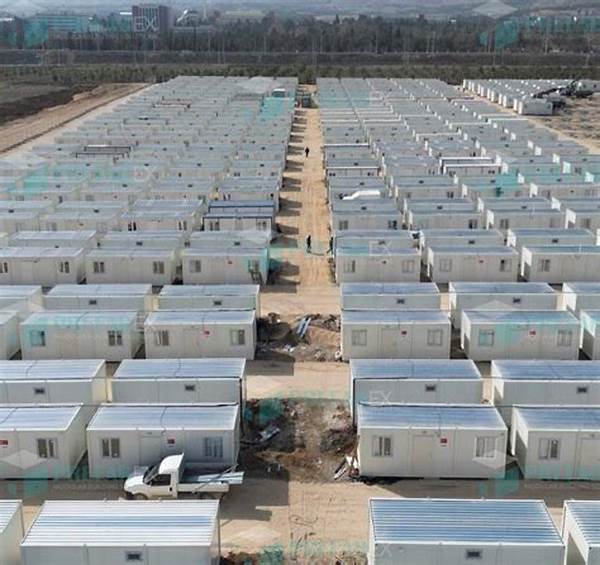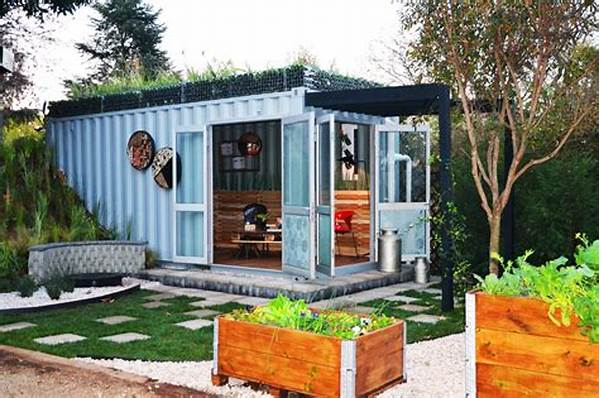Imagine a world where homes can be assembled swiftly, providing instant shelter to those plucked from the jaws of disaster. This is not a futuristic vision; it’s happening now with the ingenious use of sea containers designed for emergency housing after disasters. These robust containers, usually destined for freight, are being repurposed to provide rapid, affordable, and durable housing solutions. In the wake of earthquakes, floods, or hurricanes, these containers offer a glimmer of hope and comfort.
Read More : Benefits Of Waste Bank Activities At School
The appeal of sea containers lies in their resilience. Constructed from premium-grade steel, they can withstand extreme weather conditions that often accompany disasters. Moreover, compared to traditional emergency shelters, sea containers offer a unique combination of speed, security, and sustainability. This transformative approach converts a maritime workhorse into an emergency shelter champion, promising more than just a temporary roof over heads, but a new lease on life for affected communities.
The Advantages of Sea Containers for Emergency Housing
Speed and Efficiency
One of the primary attractions of using sea containers for emergency housing is how quickly they can be deployed. When disaster strikes, time is of the essence. With pre-fabricated designs, these containers can be rapidly transported and set up at the site of need. Imagine a team utilizing ships and trucks to deliver these shelters within days, easing logistical nightmares and providing immeasurable relief to those awaiting aid—talk about turning a tidal wave into a breeze!
Durable and Secure
Not only are these shelters quick to deploy, but also they boast impressive durability. Built to endure harsh maritime conditions, sea containers offer remarkable protection against environmental hazards. While traditional tents or makeshift shelters might falter under torrential rain or strong winds, a reinforced steel box is far less vulnerable. This sturdiness means that families can feel a sense of safety and security as they work to rebuild their lives, without fear of collapsing walls or leaking roofs crimping their recovery efforts.
Eco-friendly and Cost-effective
But wait, there’s more! Beyond their undeniable functionality, sea containers are eco-friendly and cost-effective. Recycling these containers reduces waste and repurposes what might otherwise become scrap metal. Moreover, the cost of these solutions is typically lower than traditional building materials and methods, making them an economical choice for disaster-stricken regions operating on a tight budget. Who knew that saving the environment and pinchin’ pennies could go hand in hand?
How Sea Containers Transform Lives Post-disaster
Comfort and Customization
Sea containers are more than just sturdy boxes—they can easily be customized to suit the needs and cultural preferences of different communities. Customization options range from insulation and ventilation to the addition of windows and doors, making containers feel like home. Organizations can tailor these shelters to promote comfort, and a semblance of normalcy—a humbling reminder that disasters may bend but don’t have to break community spirits.
Real-life Success Stories
Globally, these modular miracles have already made an impact. From housing solutions in the aftermath of Haiti’s earthquakes to flood relief in South Asia, sea containers designed for emergency housing after disasters have proved their mettle time and again. Interviews with beneficiaries echo gratitude, as many recount how these containers brought not just shelter, but renewed hope. The stories resonate with emotion, painting a picture of resilience and demonstrating the power of human ingenuity.
Read More : Standard Waste Container Colors
A Sustainable Vision for the Future
Looking to the horizon, it’s clear that repurposed sea containers could redefine emergency housing strategies worldwide. By supporting these innovative solutions, societies can weave a safety net that catches those unfortunate enough to encounter nature’s fury. Imagine a world where disaster response doesn’t just mitigate damage but fosters sustainable rebuilding—it’s possible, and it starts with redefining the boundaries of what homes can be.
A Deeper Dive into Features and Benefits
Captivating Solutions for Rapid Recovery
Sea containers designed for emergency housing after disasters aren’t just a stopgap—they’re an invitation to rethink disaster response and recovery processes. With the ability to house, protect, and sustain lives, they transform adversity into an opportunity for renewal. In recognizing their potential, communities worldwide can ensure that the vulnerable are never left without hope, home, or heart.
In conclusion, using sea containers designed for emergency housing after disasters reflects an intersection of ingenuity and compassion—a testament to innovative solutions making meaningful impacts. These structures, at once solid and flexible, mirror the resilience of the human spirit, ensuring we can always find a way home.










